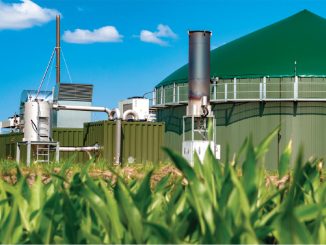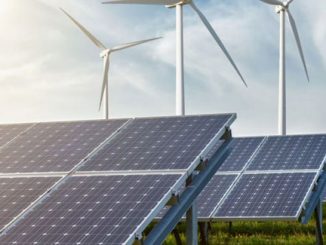
Decentralised solar applications have helped many consumers in situations of unreliable power supply. One area that has benefited greatly is the agricultural sector, which is witnessing increased uptake of solar feeders and solar pumps across India. The Ministry of New and Renewable Energy (MNRE) has been promoting solar pumps under the Off-grid and Decentralised Solar Photovoltaic Programme as well as the Pradhan Mantri Kisan Urja Suraksha Evam Utthaan Mahabhiyan (PM-KUSUM) scheme. The scheme is aimed at ensuring reliable daytime power supply for irrigation and reducing the subsidy burden on discoms. Apart from helping farmers achieve savings, solar pumps are expected to help them earn revenue by selling the excess energy from solar plants to the grid. In 2019-20, the implementation of PM-KUSUM started with a target to install 1.75 million stand-alone solar pumps by 2022. The scheme is aimed primarily at promoting the use of solar energy in the agricultural sector. This is expected to be carried out by installing new solar pumps, setting up grid-connected ground-mounted solar power plants and extensively solarising the existing pumps. Guidelines of the scheme were issued in July 2019.
Under the scheme, a total of 25,750 MW of solar power capacity is expected to be developed by 2022. The scheme comprises three main components. Component A involves the installation of 10,000 MW of capacity through small renewable energy plants of capacity up to 2 MW each on the barren/fallow land of farmers. Component B involves the installation of 1.75 million stand-alone off-grid solar water pumps and Component C pertains to the solarisation of 1 million existing grid-connected agricultural pumps with individual capacity up to 7.5 HP. In November 2019, detailed guidelines were issued to include applicable standards and specifications with the aim to ease the implementation of Component C. This was followed by amendments to the guidelines for the implementation of Component C in July 2020, to allow system integrators to take part in the bidding process. The amendment added that the implementing agency should invite bids for the empanelment of vendors through a transparent bidding process. Currently, solar pumps fulfilling the MNRE specifications can be installed under the scheme. However, in order to promote innovation in technology, the MNRE has decided to permit the installation of innovative stand-alone solar pumps in test mode.
Innovative solar pumps
In line with this decision, the MNRE had set guidelines for the installation of innovative stand-alone solar pumps for demonstration in June 2020. These guidelines were drafted with the aim of helping improve the efficiency and performance of solar pumps while reducing costs. As per the guidelines, field tests would go on for the first year of installation. The guidelines are applicable to all Indian innovators, manufacturers and service providers who wish to install innovative stand-alone solar pumps in the country under the schemes offered by the MNRE. The guidelines further elaborate on specific issues under four categories: call for expressions of interest (EoIs), evaluation of applications, demonstration of the innovation, and the adoption of technology by the MNRE.
The MNRE will invite EoIs from time to time from solar pump innovators claiming better performance on account of improved efficiency, cost effectiveness, monitoring, etc. Only those innovative products that are available for testing and field trials will be eligible under the EoI. New technologies for which patent or IP-related filings have been done will also be eligible to participate. In September 2020, the MNRE invited innovators, manufacturers and service providers to submit EoIs to participate in the government’s solar pump scheme for promoting innovative pumps. Applicants are expected to submit proposals with details about technology, innovativeness, outcomes including a test report and a cost-benefit analysis of their product. Innovators who score at least 75 per cent based on the marking criteria set by the MNRE will be invited to participate. They must also submit an earnest money deposit of Rs 5,000. Successful applicants would be chosen by technical and financial experts at the MNRE to install up to 50 stand-alone solar pumps.
Based on the recommendations of the evaluation committee, the most innovative technology will be demonstrated after obtaining consent from the respective state implementing agencies and beneficiary farmers. The innovator will be allowed to install up to 50 solar pumps for demonstration purposes in different parts of the state or union territory. Field demonstration will continue for at least one year from the date of installation of such pumps and during that period the performance of the pump will be monitored on a real-time basis. Based on recommendations of the evaluation committee, the MNRE may adopt the technology and update the existing specifications after holding detailed consultations with stakeholders. The participating companies will provide a comprehensive maintenance contract for the installed pumps for a period of five years and follow related provisions of the PM-KUSUM scheme. The call for EoIs is expected to promote innovation in the solar pump segment by allowing innovators a chance to showcase their technologies in real field conditions. The MNRE will shortlist promising technologies and allow selected innovators to install solar pumps under the PM-KUSUM scheme.
 Recent tenders and developments
Recent tenders and developments
In September 2020, the MNRE proposed to initiate a centralised tendering process with a target of setting up 450,000 stand-alone solar pumps under Component B. The ministry invited suggestions from stakeholders on a variety of issues related to solar pumps, such as participation in the tender, technical and financial requirements, number of vendors to be empanelled in each category, cluster-wise bidding, minimum capacity allocation to the lowest bidder, and contract performance guarantee requirements. In keeping with the first year’s target of 175,000 solar pumps, centralised tendering was concluded through EESL and installations are under progress.
Recent tenders for solar pumps include Central Electronics Limited’s (CEL) tender for setting up 1,707 solar pumps and the Haryana Development Renewable Agency’s (HAREDA) tender for 466 DC solar pumps under the PM-KUSUM scheme. The CEL pumps will be installed under Jaipur’s power discom and the scope of work will include the design, survey, supply, installation, testing, commissioning and five-year comprehensive maintenance of the solar PV systems. The solar modules will be supplied by CEL at the centralised location in Rajasthan.
Recently, the MNRE issued clarifications on certain issues pertaining to subsidies under the PM-KUSUM scheme. As per the clarifications, the government’s share of subsidy for Component B and Component C shall be a minimum 30 per cent of the applicable MNRE benchmark cost or the cost discovered through tender, whichever is lower. States may provide a higher share of subsidy to reduce the beneficiary farmers’ contribution, however, the central financial assistance (CFA) would be limited to 30 per cent for a pump of capacity up to 7.5 HP. Farmers would have the option to install a universal solar pump controller (USPC) under Component B, for which they would have to bear an additional cost. There is no CFA for the additional cost of USPCs, although states are allowed to bear the additional cost of USPCs, fully or partly, to support farmers.
The way forward
Solar pumps across India have now crossed 250,000 installations. With the rapidly increasing number of solar pumps, their quality and economic viability should also improve. While solar pumps have brought about a revolution by providing water for irrigation, they require considerable outlay for implementation. Solar pumps can be improved upon to become more efficient and provide better results through innovation.
As per the MNRE, innovators have claimed that by using different designs and software for solar pumps, equipment performance can be enhanced to surpass ministry specifications, in a cost-effective manner. While government subsidies are currently giving a push to solar pump deployment, in the long run, solar pumps need to become cheaper in order to ease the financial pressure of installing and maintaining them. The new guidelines and invitations for EoIs are expected to lead to the evolution of better solar pumps, which are scalable on an economic level while being more efficient.



